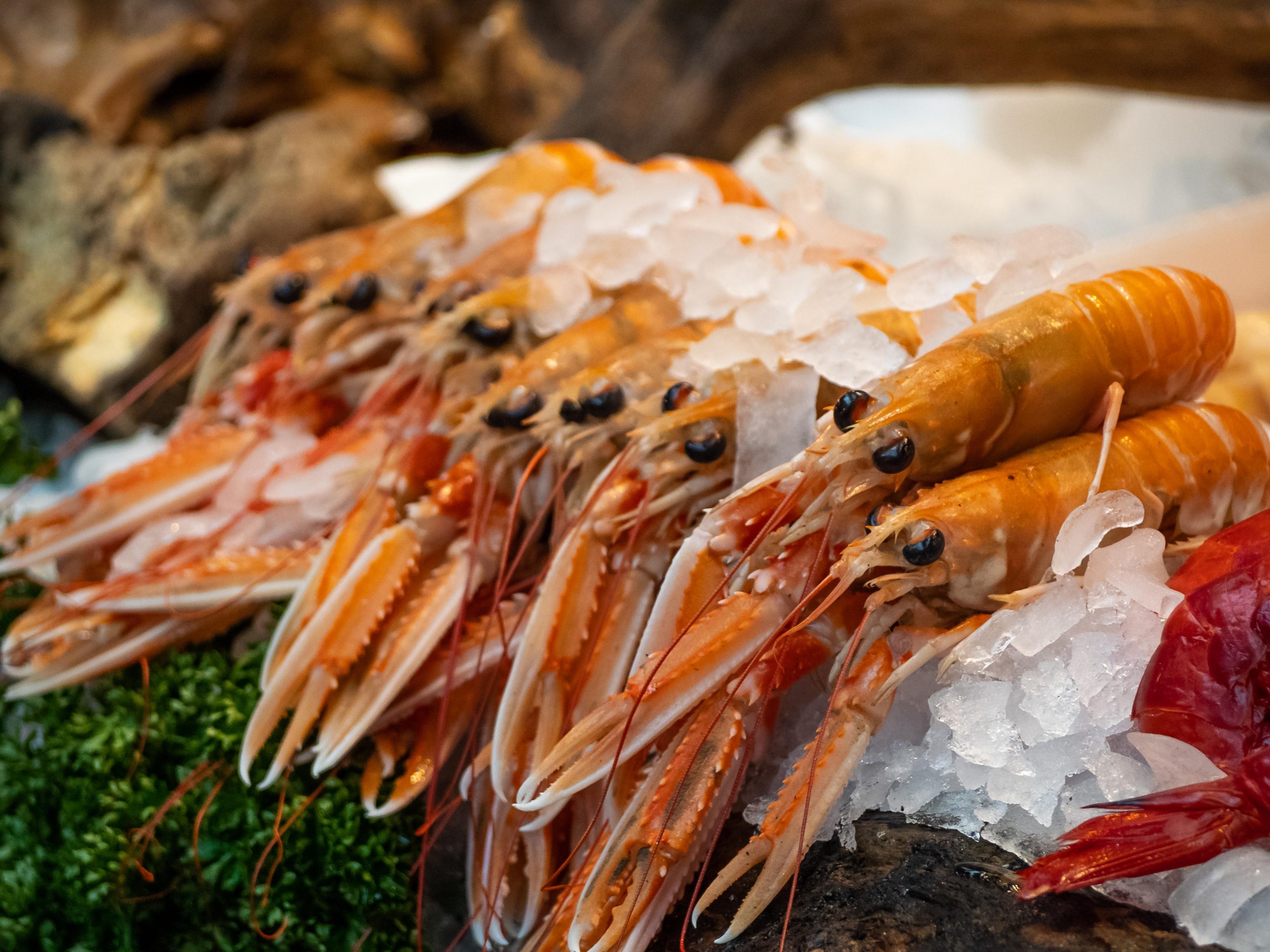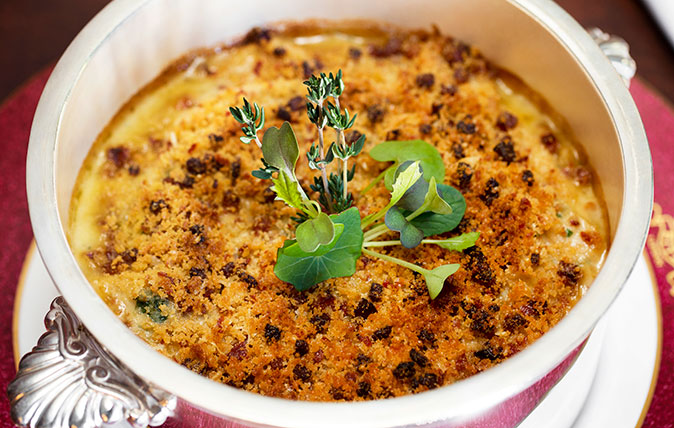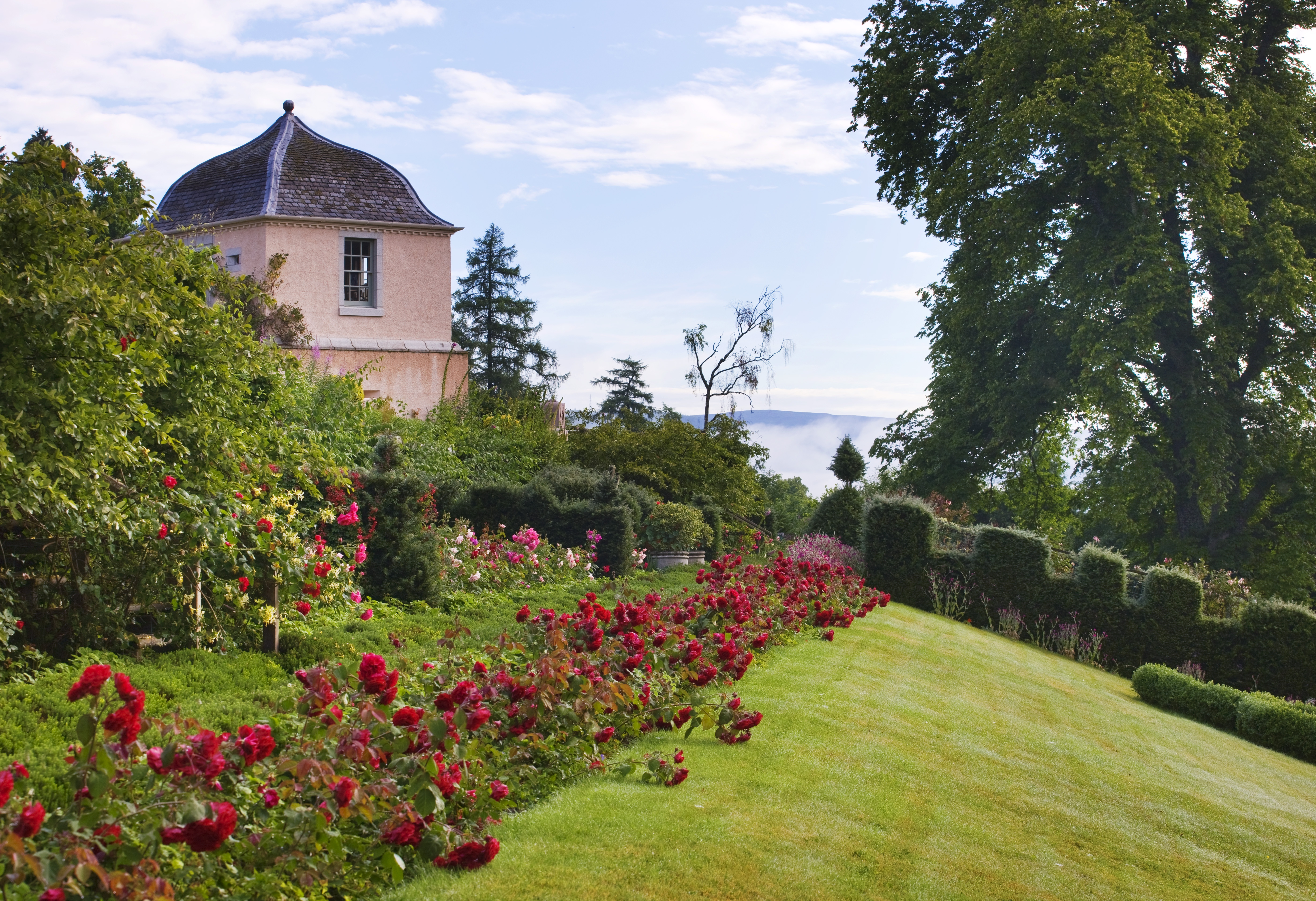Tom Parker Bowles: The langoustine dish that 'was one of my grandmother’s favourites', as The King told me. And it's one of his, too
Scampi evokes easy pasta dishes or deep-fried pub grub, but call them langoustines and you have a dish fit for a king — or, indeed, The King, says Tom Parker Bowles.


What a difference a name makes. On the one hand, there’s scampi, breaded and deep fried, yours for less than a tenner, preferably presented in a basket, with a fistful of proper chips and a couple of sachets of tartare sauce so sharp it strips the enamel from your teeth. The sort of pub grub that would accuse you of spilling his pint and challenge you to a fight in the car park, before planting a smacker on your cheeks and announcing that you’re his very best mate.
Langoustines, on the other hand, are served whole, with fresh mayonnaise, or hewn in half, chargrilled and anointed with a herb- and garlic-infused dressing. They cost north of £20 each, serious restaurant food, elegant, but understated, like a minor Italian aristocrat, clad head to toe in Loro Piana, who flirts with aged Contessas and is a total stranger to socks. Two ends, then, of the culinary spectrum, but both exactly the same beast. Nephrops norvegicus, to be precise, or the Norway lobster, found from Iceland down to Morocco and the Mediterranean, too.
And I love it in all its forms, from Wetherspoons to The River Cafe, devoured under nicotine-stained plaster cornices and sun-baked parasols alike. Scampi, the Italian plural, has long been adored in pastas and risottos, deep fried, too. As ever, the British were late to catch on to its manifold charms, with fishermen right up to the 1950s seeing them as bycatch, to be thrown overboard. Or at best, as a treat for the crew. They’re also known by another name, Dublin Bay prawns. Not because they were fished in Dublin Bay—rather, boats entering the harbour would flog them to Dublin street vendors, the likes of dear Molly Malone.
But it was Young’s Seafood — according to Hugh Fearnley-Whittingstall and the late Nick Fisher, in the magisterial River Cottage Fish Book — that developed scampi as we know it for The Ritz in Piccadilly, soon after the Second World War.

In time, these deep-fried nuggets moved from silver salver to pub platter and their production — the tails separated from the head, frozen to break down the membrane that attaches meat to carapace, thawed, shelled, cleaned, dipped, crumbed and refrozen — morphed from hand-cooked to industrial. We still devour more than 900 tons of those plump beige commas a year. And although British food-labelling laws insist that only Nephrops norvegicus may be used, I’m pretty sure a few mountebanks slip in.
If you can, buy them live, always creel-caught, rather than trawled. Freeze for a few hours, then drop into lustily salted boiling water and cook for about four minutes. As ever with crustaceans, the flesh can move from sweet bliss to mushy pap in a matter of seconds, so I always tend to slightly undercook. Eat warm with garlic butter or cold with mayonnaise. Or cut them in half, slather with garlic and chilli butter and put under the grill for a few minutes or atop the barbecue. Otherwise, buy them freshly cooked from a decent fishmonger.
Oh, and don’t forget the claws. Hidden inside is the sweetest flesh of all.
Exquisite houses, the beauty of Nature, and how to get the most from your life, straight to your inbox.
How to make Oeufs Birkhall
Oeufs Drumkilbo was said to have been invented at the eponymous home of Lord Elphinstone, a handsome white building deep in the depths of Perthshire. One night, some guests arrived late, with dinner long gone. However, Madame Vodka, the cook, went through the icebox and found a cooked lobster, a brace of hard-boiled eggs, some prawns and a couple of tomatoes. She added anchovy essence, fish stock, mayonnaise and some aspic — and a great dish was born.
Lord Elphinstone happened to be the Queen Mother’s nephew and, after one bite of Madame Vodka’s new creation, she asked for the recipe, to pass on to her chef.
Now, as ever with the tales of certain dishes, some details might have been embellished. Indeed, I was quite rightly reprimanded by one of Lord Elphinstone’s descendants, who said the truth was rather more prosaic. Still, ‘it was one of my grandmother’s favourites,’ The King told me. And one of his, too; it’s still a regular starter at Birkhall. So, in honour of the coronation, I’ve changed the lobster to langoustines and replaced the parsley with tarragon, one of The King’s favourite herbs. I do hope Madame Vodka would approve.
Ingredients
Serves 4
- 3 gelatine leaves
- 500g Scottish langoustine meat
- 75g peeled prawns
- 1 hard-boiled egg
- 3 plum tomatoes, peeled, seeded and diced
- 100ml clear fish stock
- 100g mayonnaise
- 25ml tomato sauce
- Splash of anchovy essence
- Splash of Worcestershire sauce
- 10g tarragon, chopped
- Few pinches of chives, chopped
- Salt and pepper
- Chervil leaves, for decoration
Method
Soak gelatine leaves in ice-cold water to soften.
Chop langoustine tails and prawns into small chunks and put in a large bowl. Dice the egg and add, together with the diced tomato.
Warm the fish stock until just simmering, then squeeze out the gelatine leaves and stir them into the stock. When dissolved, remove from heat.
Mix the mayonnaise, tomato sauce, anchovy essence, Worcestershire sauce and a third of the fish stock. Gently fold this sauce into the seafood mixture, add herbs and adjust seasoning. Spoon into four ramekins or small glass bowls and smooth the tops with a palette knife.
Chill in the fridge for an hour before glazing with the remaining fish stock/aspic mixture, then return to the fridge to set.
Scatter with chervil leaves and serve with hot brown toast.

How to cook The Prince of Wales’ favourite dish: Pheasant Crumble Pie
See how to make the Prince of Wales's favourite dish, pheasant crumble pie, as demonstrated by John Williams, executive chef

Birkhall: The home of The Prince of Wales on the Balmoral estate, Aberdeenshire
Alan Titchmarsh explores the garden of Birkhall, The Prince of Wales's Scottish home on the Balmoral estate.

The Prince of Wales's garden at Highgrove: Flowers galore, a wildflower meadow and a treehouse once used by Prince William and Prince Harry
HRH The Prince of Wales's famed garden is open to the public now until October. Country Life's gardens editor Tiffany
Tom Parker Bowles is food writer, critic and regular contributor to Country Life.
